
Credit: NASA/JPL-Caltech
Explore the "Magic Windows" of the electromagnetic spectrum below!
Radio Waves

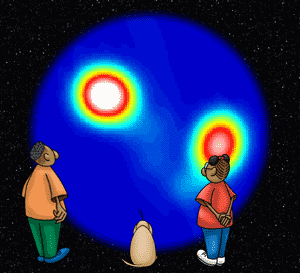
Credit: NASA/JPL-Caltech
Radio waves are very long and not very energetic. Radio waves can be from about the length of a football field up to 100 kilometers (60 miles) and more.
Here we see a quasar (for "quasi-stellar object") through the Magic Radio Window. Quasars look a bit like stars but are very different in many ways. They are some of the most distant objects we see, and they put out great amounts of radio energy. Astronomers think they may be the centers of active galaxies that have supermassive black holes.
Like a radio telescope, this Magic Window sees radio objects in the sky, then a computer converts that energy to colors in the visible part of the spectrum that we can see.
Microwaves

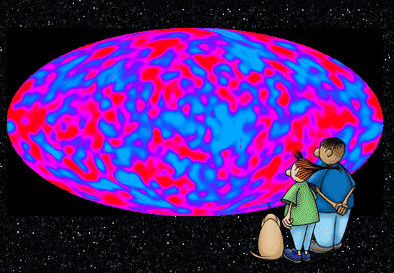
Credit: NASA/JPL-Caltech
Microwaves are from about 1 millimeter (about the size of a sharp pencil point) to about 1 foot long.
This window shows us the microwave energy known as the cosmic background radiation. It is the "noise" left from shortly after the Big Bang that began the universe billions of years ago. The different colors represent very tiny differences in energy that eventually resulted in matter clumping together into galaxies and even bigger structures throughout the universe.
This information was gathered by the Cosmic Background Explorer spacecraft over 4 years in the early 1990's.
Infrared Waves

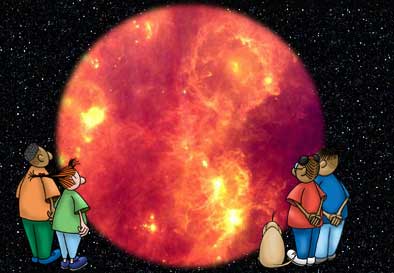
Credit: NASA/JPL-Caltech

Credit: NASA/JPL-Caltech
Infrared waves are about the length of a grain of sand.
Do you recognize the constellation Orion? If you could see Orion in the infrared part of the electromagnetic spectrum, this is what you would see. Most of the stars you normally see in Orion don't stand out in this wavelength. One of the things you do see is a large bright ring-shaped feature, which is expanding debris from an exploding star. We normally experience infrared radiation as heat. The Spitzer Space Telescope was launched in August 2003. It is helping us learn much more about the infrared universe.
Visible Light


Credit: NASA/JPL-Caltech
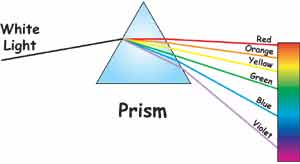
Credit: NASA/JPL-Caltech
The Visible Light Magic Window sees the same part of the spectrum as our eyes see. Visible waves are a little shorter than the size of a bacterium. This is planet Jupiter. If you looked through a very good telescope you would see Jupiter like this. The Hubble Space Telescope in Earth orbit sees very far and very faint objects in the visible part of the spectrum, as well as the ultraviolet.
By the way, in the visible light range of the electromagnetic spectrum are the separate smaller ranges that our eyes see as different colors. A prism separates white light into its different wavelengths. White light goes in, all the colors of the rainbow come out. In the visible range, red has the longest wavelength, while violet has the shortest.
Ultraviolet Waves

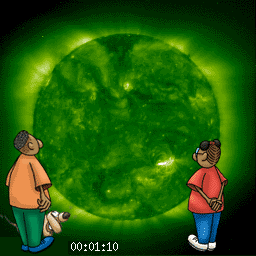
Credit: NASA/JPL-Caltech
Ultraviolet waves are as tiny as a single virus. The Ultraviolet Magic Window shows us our own star, the Sun, as it rotates and seethes with activity. We can clearly see sunspots, flares, and other solar events in this wavelength.
The Solar and Heliospheric Observatory (SOHO), in orbit around the Sun, has an ultraviolet telescope onboard that gives us images like this one.
X-rays

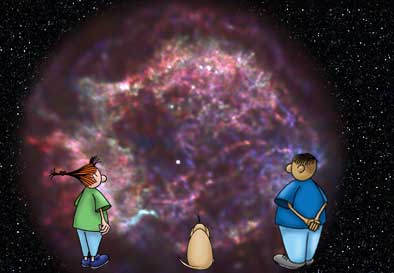
Credit: NASA/JPL-Caltech
The wavelength of a single x-ray is smaller than a single atom.
This is what is left of a star whose life ended in a huge explosion long ago. It is called the supernova remnant Cassiopeia (cas-ee-oh-PE-a) A. All of the elements that make up the sun and planets in our solar system, and all the elements on Earth and in our bodies are "cooked" in these exploded stars. The bright point near the center is the neutron star that remains.
This image was made with the Chandra X-ray Observatory, placed in orbit around Earth by the Space Shuttle in July 1999. Chandra studies high-energy regions of the universe, such as hot gas in the remnants of exploded stars and clusters of galaxies, and matter falling into black holes or shooting out of active galaxies in jets.
Gamma Rays

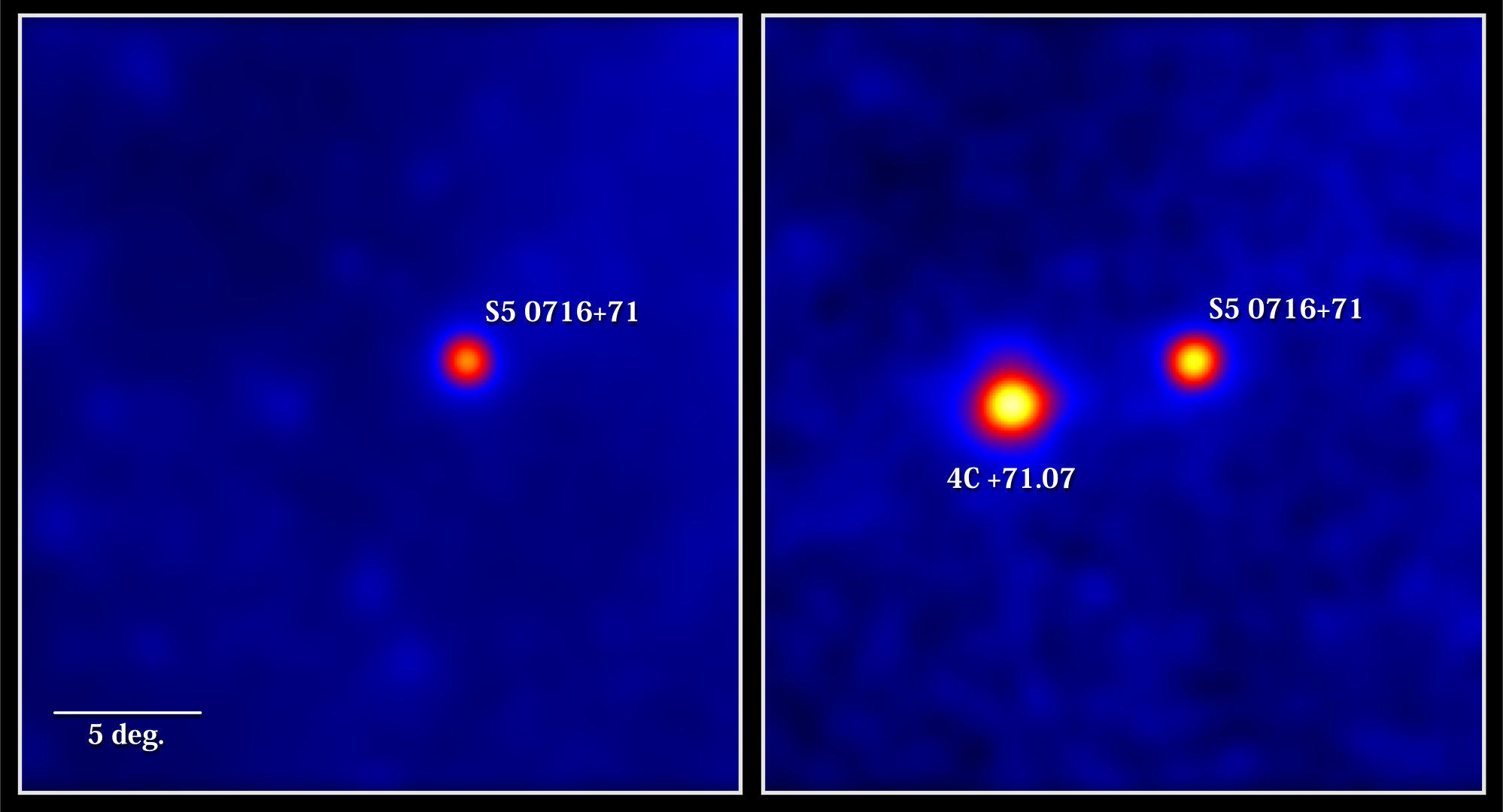
Gamma rays are the most energetic form of light we have detected. Gamma rays come from black holes, neutron stars, supernovae (stars exploding at the end of their lives), pulsars, quasars, and other sources we don't understand yet. Great bursts of gamma rays occur frequently, and it's still a mystery where they are coming from.
This image was taken by the Fermi Gamma-ray Space Telescope which was placed in orbit around Earth in June 2008. At the height of this gamma ray outburst, the galaxy was more than 10,000 times brighter than the combined brightness of all of the stars in our Milky Way galaxy.
Related Resources for Educators
The Electromagnetic Spectrum: Video Series and Companion Book
ViewSpace: Explore the Universe with Interactives and Videos
Sensing the Universe


